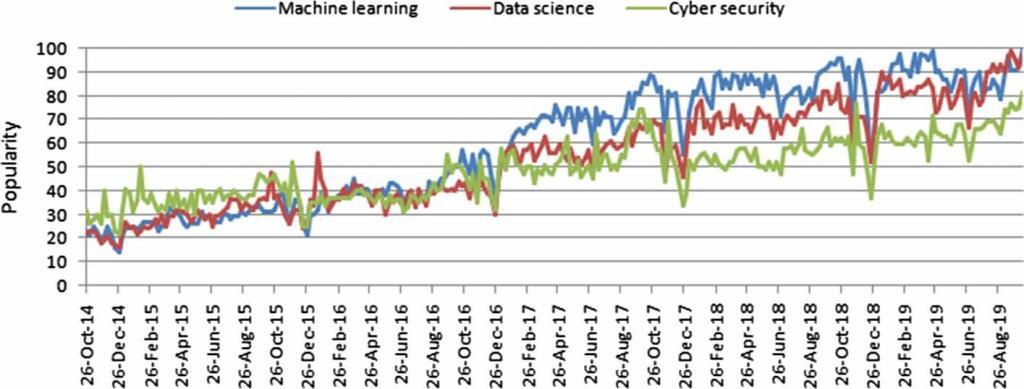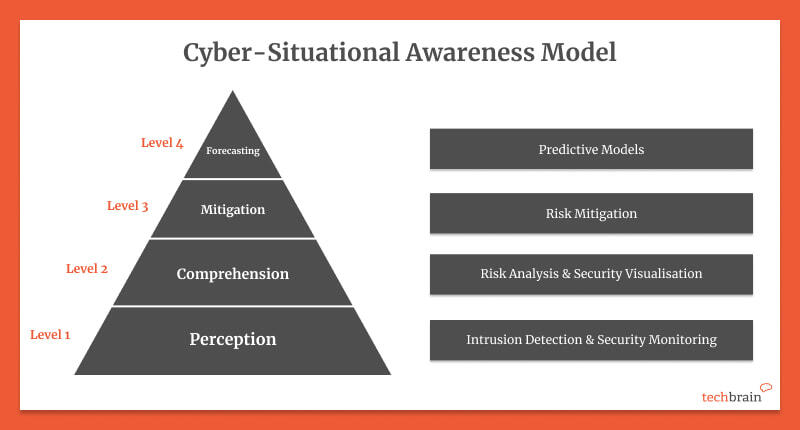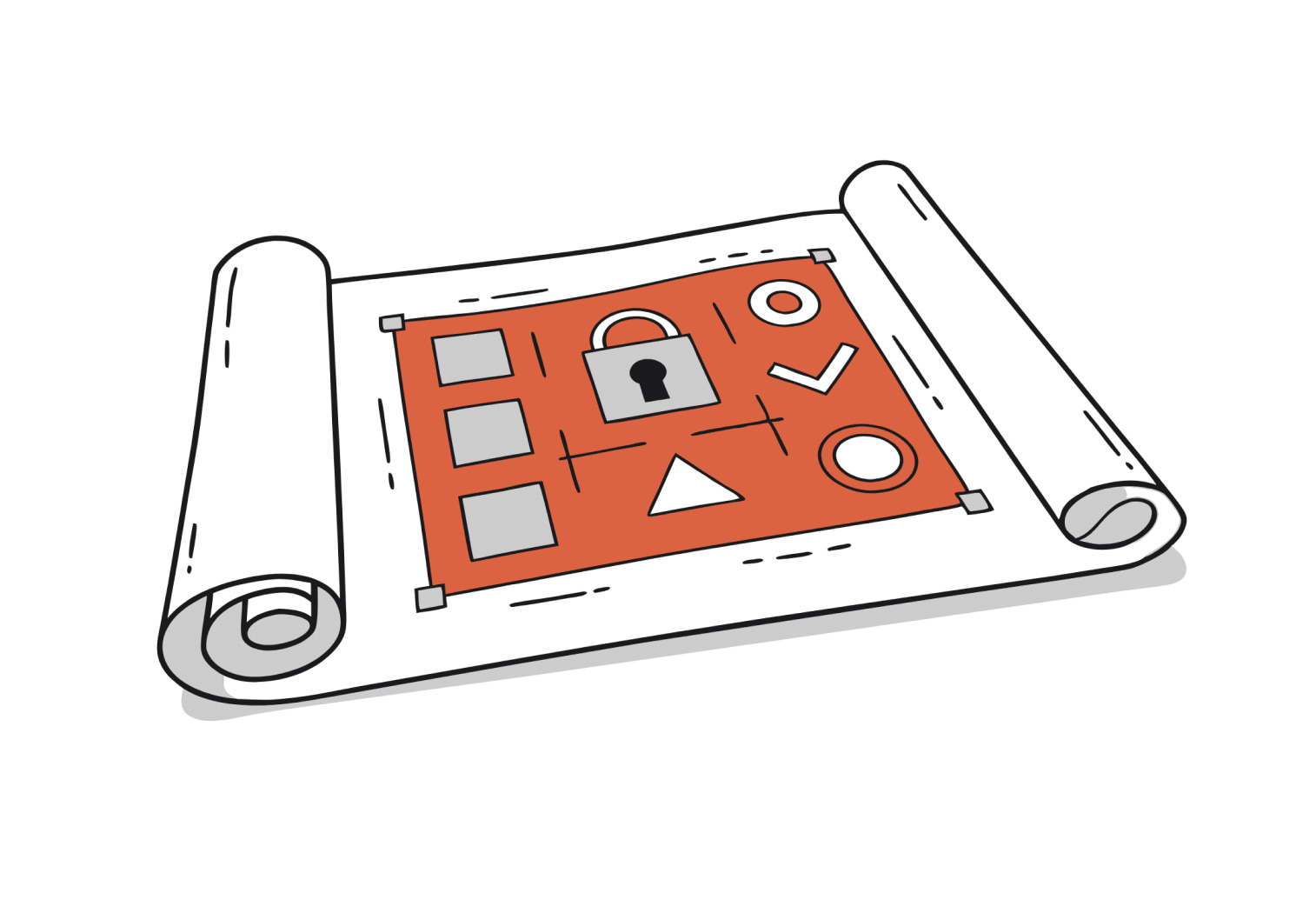In this article
Definition: What is Cybersecurity Analytics?
Data analytics is critical in any field to understand exactly what’s going on. It levels the playing field, and provides valuable context and insights when making future-focused decisions.
Cybersecurity is no different.
Cybersecurity analytics is built on a base of thorough data collection. Rafts of cybersecurity raw data are gathered, collated, and analysed, then translated into recommendations, actions, and reports. It provides the data that feeds into AI-powered cybersecurity software.
These reports and cybersecurity platforms then provide advice and actions for the user to undertake next.
Cybersecurity analytics are the building blocks that deliver a proactive approach toward security measures for your network infrastructure, rather than simply reactive approaches.
And while you can’t predict the future, if you understand the environment and historic cybersecurity attacks, analyse how they occurred, who performed them, their aims and goals, and how the company was made vulnerable, then you can fix these gaps in your business’ systems.
By analysing this data and understanding what made each data breach possible your business can t identify potential vulnerabilities in its own processes, and better detect potential attack before they have a chance to damage your bottom line.
Cybersecurity Analytics is the New Generation of Cybersecurity
These days, there are many robust cybersecurity analytics engines out there that deliver threat detection and security monitoring, in real-time.
These cybersecurity protocols, once naively considered a nice-to-have, are now critical to a business’ survival. It signifies your business’ growth from a protection mindset to one of detection.
The right cybersecurity analytics platform provides your business with a holistic view of your cybersecurity: a full history of your business’ cyber security processes and threats, coupled with broader industry issues.
But it also allows you to undertake threat hunting in real-time, providing an immediate alert so you’re prepared against any malware attacks and present threats.
Cybersecurity analytics is also a smart way to communicate to executive teams, management, and stakeholders. The data it gathers allows your security teams to access real time analytics and results, and provide insights that demonstrate the value your security solutions are delivering.
Cybersecurity analytics is essential for modern organisations of all sizes to thrive, so let’s look at what this means for your business.
Data Science in Cybersecurity
Data is one of the most valuable business commodities these days. It’s essential for businesses and how they operate. So understanding the science behind your cybersecurity data analytics can inform how you roll it out for your organisation.
Here’s how cyber security data analytics is powering the cyber security industry forward.
Machine Learning & Predictive Analytics in Cybersecurity
AI and machine learning technologies are rapidly advancing, and as it does, we’re taking advantage of these exciting advances and applying them to improving information security. Cyber security practices are quickly taking what was previously science fiction, and turning it into science fact.
Cybersecurity analytics platforms use powerful algorithms to gather and analyse data from a range of cyber security systems. They collect and study historical cyber security threat and attack data, and once it’s gathered, sorted, and analysed, it’s translated into predicting patterns of cyber threats.
And the more attacks there are, the more relevant data is gathered, the more informed analytics become—the more precise they can be in predicting future attacks before they occur.
This works in real-time, too. These data-driven models are used to collect and analyse information and analyse patterns, casting a historic lens over the data to determine where current patterns match historical threat patterns.
This improves how your security teams perform anomaly detection on your network traffic, detect instances of malware, and better identify any potential attack and security event management. This enables you to reduce response times altogether, and stop targeted attacks before they can even occur, based on a series of indicators alone.
The Need For Big Data Analytics
Businesses are relying on ever-increasing pools of data, which exists across such a broad and diverse footprint. So it’s no surprise that big data analytics can take an active part in improving how we understand and manage our cyber security data.
With a more comprehensive data driven approach, big data analytics frameworks have the power and the capability to deliver more advanced analysis techniques. They can work faster, to deliver the processing speed required to analyse and identify vulnerabilities and threats as quickly as possible.
They can undertake a more wider-reaching analysis of data, not possible in a lower-level platform.
So it’s critical that these two fields work together, so we can improve cyber security practices and risk management across the board.
Cyber Data Analysts
Cyber data analysts will become invaluable in how you deploy a security solution. They’re the drivers behind your analytics deployment, and will work with you to:
- Define the needs of your cyber security data analytics platforms and processes, dig through the available information to identify threats and vulnerabilities your business faces;
- Analyse the available data to determine the manner of solution you require;
- Report on their findings, and deliver recommendations for deploying security data analytics; and
- Come on board to roll out the process for you as an embedded part of your security teams.
These security professionals will work together with your internal security analysts and security teams to analyse historical and existing threats and vulnerabilities, and use these to create customised threat models and algorithms that are designed for your business’ unique vulnerability profile and data footprint.
The Key Benefits of Cyber Security Analytics Tools
Expanded Threat Intelligence & Active Dashboards
There’s a worrying statistic that nearly 80% of senior IT and IT security leaders believe their organizations lack sufficient protection against cyberattacks.
Does this sound like your business?
These days, you can’t just rely on your antivirus software and security alerts to tell you about potential cyber security threats.
Cyber security analytics tools enable you to gather more insight from the data available to you. They allow you to actively gather more data, thereby doubling down on the threat intelligence you’re able to analyse.
You can then translate all this into active dashboards, and present the information in clear, easy-to-understand language and numbers.
You can customise the dashboards to keep track of important metrics, or business requirements, and gain better insight into how your business is remaining secure against evolving threats.
Faster Detection & Actionable Response
The more security information your cyber security analytics tools have at their disposal, the better they’ll learn to analyse and identify threats. The more they do this, the quicker your algorithms become, and the more immediate your threat response can be.
So instead of waiting for a threat to occur, or allowing your teams to become the victim of identity theft, your tools can identify patterns and trends, based on both internal and external information, and provide you with warnings to boost security in areas that are most vulnerable.
They can provide you with clear and actionable response steps to take—before threats even become apparent.
Identification Of Data Loss & Backups
Often in cyber security incidents it’s not immediately obvious what was compromised. It’s not as easy as physical security; there are no obvious broken windows, no trashed office spaces. So it’s not as easy to understand what assets or data has been lost.
Your cybersecurity analytics tools are much better at deriving actionable insights from this data attack. They provide you with enhanced forensic investigations into your data, so you’ll be able to get more in-depth data about present, or potential, cyber security threats.
You’ll be able to identify exactly what assets or data have been compromised or lost, which you can match this against your backups, and get your lost data back up and running again sooner.
Improved Forensic Incident Detection
As there’s not necessarily a smoking gun when it comes to cyber security events, it’s often hard to tell how your system was even infiltrated in the first place, or where the cyber attacks originated from.
The right cyber security data analytics platform can help you determine this. Clever artificial intelligence enables you to gather more data about specific events, so you get a clear picture of exactly what happened.
And as your cybersecurity data analysis tools log and collate everything, you’ll also gain a clear timeline as to how any attack unfolded.
From this, your machine learning algorithm can help your security experts learn how to avoid it in the future.

Intrusion Detection In Real-Time
Comprehensive cyber security analytics gives you faster, more immediate response to active cyber security threats. In fact, you can detect them in near real-time.
Your analytics tools work to gather, log, and analyse data and other sources almost instantaneously. This means that your cyber security data analytics tools are working away to make sense of all incoming and outgoing data.
And, by analysing these events, they can detect any suspicious activity and unauthorized access as soon as it becomes apparent. so you can protect data before it becomes compromised.
Real-time threat detection and fast response is a key pillar of a robust security posture—and one that’s only effectively available through the use of cybersecurity data analytics.
Security Analytics Use Cases
Cybersecurity data analytics can be invaluable in helping your business remain protected, and will become invaluable in the following use cases.
Threat analysis
Security analytics platforms are geared to analyse patterns and behaviours—and this can be applied directly to your business’ network. By analysing network traffic and seeking to detect suspicious patterns, your security analytics can detect patterns that indicate potential threats against your network, as they occur.
Monitoring user behavioral analytics
Threats don’t always come from the outside. Cyber security analytics platforms can facilitate the monitoring of user behavior on your network. They can track and analyse abnormal behavior, and identify suspicious activity and security risks within your network through a network traffic analysis. They can be used to detect insider threats before they occur.
While this can be a murky field, with the right cyber security analytics you get a deeper analysis of user behavior and history, actions, and intent, contextual data clues that provide cases for or against security issues.
Identifying data leaks and exfiltration
Cyber security analytics can accurately pinpoint any unauthorised movement and use of data on your network. Whether it’s email, communication through unauthorised communication channels, non-secure behaviour in external cloud servers, or manual processes like uploaded to external devices, such as a USB drive or smart device. These intrusion detection systems give you a clearer, more immediate notification of any existing or potential data leaks or data theft, so you can plug them before they become a critical threat.
Identifying compromised user accounts
Cyber security data analytics enables you to undertake deep learning and analysis of user accounts and identify where and how they’ve been compromised.
This allows you to identify indicators of compromise, such as those hidden in files or system log entries, unusual network or user traffic, or increases in database read volume.
Identifying these, performing a malware analysis, and gathering and analysing them in real-time, enables your business to gain better security insights, while more quickly identifying malicious attacks or compromised accounts, which helps close gaps in your security posture and protect against future attacks.
Cybersecurity Data Analytics are Fast Becoming a Business Requirement
As cyber risks and malicious actors get smarter, our cyber security needs are becoming more complex. The need for more and more business data is growing, and it’s now slowing down any time soon.
But it’s in Big Data analytics that businesses can take back control of their cyber security. By leveraging cybersecurity data analytics to actively interrogate this data, businesses can create a powerful cybersecurity network infrastructure.
By using AI and machine learning technologies to analyse their data, businesses can learn to detect threats far more comprehensively. They can put measures in place to avoid potential vulnerabilities, and eventually utilise cybersecurity tools to predict emerging threats before they even have the chance to occur.
By gathering and collating all this data, machine learning algorithms can support your businesses in implementing better risk management practices, and stay compliant with changing data privacy rules and regulations.
And importantly, by deploying cybersecurity data analytics to gather both insider threats and external threat intelligence, businesses are doing everything in their power to secure their data, both now and for the future.
Cyber Security Data Analytics Empowers you to Fight Cyber Security Threats before they Occur
As a business in an increasingly connected world, it’s critical that you stay on top of the latest cybersecurity practices and protocols available to you.
In doing this, you’ll be able to build a business that evolves as cyber security threats do, and ensure your company’s data is as safe and secure as possible.
TechBrain is a leading provider of innovative cyber security solutions for business. We can help deliver smarter cybersecurity data analytics solutions that bolster your security environment against future cybersecurity threats.
Get in touch with us today to discuss your business’ network security, and organise a free consultation to discuss how we can improve your cybersecurity solutions for the future.








